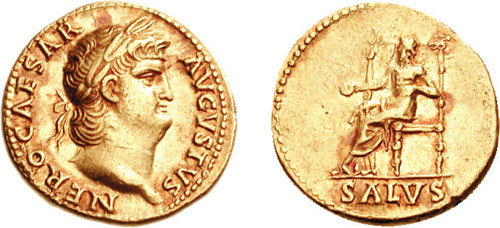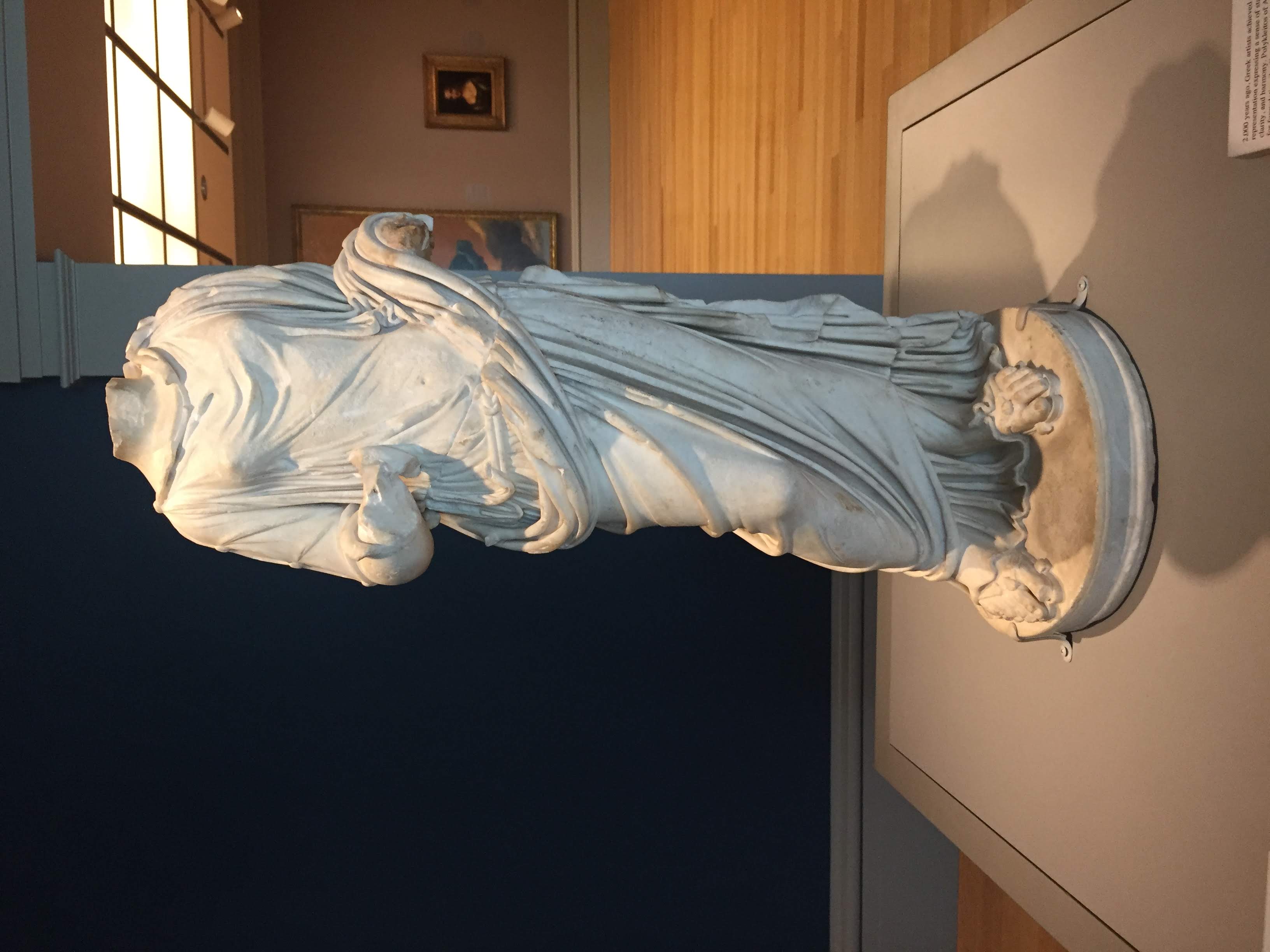Salus Augusta on:
[Wikipedia]
[Google]
[Amazon]
 Salus ( la, salus, "safety", "salvation", "welfare") was the Roman goddess of safety and well-being (welfare, health and prosperity) of both the individual and the state. She is sometimes equated with the Greek goddess Hygieia, though their functions differ considerably.
Salus is one of the oldest Roman goddesses: she has also been referred to as ''Salus Semonia'', a fact that might hint at her belonging to the category of the ''Semones'' (gods such as ''Semo Sancus Dius Fidius''). The two gods had temples in Rome on the ''Collis Salutaris'' and ''Mucialis'' respectively, two adjacent hilltops of the
Salus ( la, salus, "safety", "salvation", "welfare") was the Roman goddess of safety and well-being (welfare, health and prosperity) of both the individual and the state. She is sometimes equated with the Greek goddess Hygieia, though their functions differ considerably.
Salus is one of the oldest Roman goddesses: she has also been referred to as ''Salus Semonia'', a fact that might hint at her belonging to the category of the ''Semones'' (gods such as ''Semo Sancus Dius Fidius''). The two gods had temples in Rome on the ''Collis Salutaris'' and ''Mucialis'' respectively, two adjacent hilltops of the
 Salus was often shown seated with her legs crossed (a common position for Securitas), leaning her elbow on the arm of her throne. Often, her right hand holds out a patera (shallow dish used in religious ceremonies) to feed a snake which is coiled round an altar. The snake is reared up and dips its head to the patera.
Sometimes her hand is open and empty, making a gesture. Sometimes the snake directs its gaze along with hers. Sometimes there is no altar; the snake is coiled around the arm of her throne instead.
Occasionally, Salus has a tall staff in her left hand with a snake twined around it; sometimes her right hand raises a smaller female figure. Later, Salus is shown standing, feeding her snake. This became the most common pose: she is standing and grasping the wriggling snake firmly under her arm, directing it to the food she holds out on a dish in her other hand. Rarely, Salus is holding a steering oar in her left hand indicating her role in guiding the emperor through a healthy life. This really belongs to Fortuna.
Salus was often shown seated with her legs crossed (a common position for Securitas), leaning her elbow on the arm of her throne. Often, her right hand holds out a patera (shallow dish used in religious ceremonies) to feed a snake which is coiled round an altar. The snake is reared up and dips its head to the patera.
Sometimes her hand is open and empty, making a gesture. Sometimes the snake directs its gaze along with hers. Sometimes there is no altar; the snake is coiled around the arm of her throne instead.
Occasionally, Salus has a tall staff in her left hand with a snake twined around it; sometimes her right hand raises a smaller female figure. Later, Salus is shown standing, feeding her snake. This became the most common pose: she is standing and grasping the wriggling snake firmly under her arm, directing it to the food she holds out on a dish in her other hand. Rarely, Salus is holding a steering oar in her left hand indicating her role in guiding the emperor through a healthy life. This really belongs to Fortuna.
 Salus ( la, salus, "safety", "salvation", "welfare") was the Roman goddess of safety and well-being (welfare, health and prosperity) of both the individual and the state. She is sometimes equated with the Greek goddess Hygieia, though their functions differ considerably.
Salus is one of the oldest Roman goddesses: she has also been referred to as ''Salus Semonia'', a fact that might hint at her belonging to the category of the ''Semones'' (gods such as ''Semo Sancus Dius Fidius''). The two gods had temples in Rome on the ''Collis Salutaris'' and ''Mucialis'' respectively, two adjacent hilltops of the
Salus ( la, salus, "safety", "salvation", "welfare") was the Roman goddess of safety and well-being (welfare, health and prosperity) of both the individual and the state. She is sometimes equated with the Greek goddess Hygieia, though their functions differ considerably.
Salus is one of the oldest Roman goddesses: she has also been referred to as ''Salus Semonia'', a fact that might hint at her belonging to the category of the ''Semones'' (gods such as ''Semo Sancus Dius Fidius''). The two gods had temples in Rome on the ''Collis Salutaris'' and ''Mucialis'' respectively, two adjacent hilltops of the Quirinal
The Quirinal Hill (; la, Collis Quirinalis; it, Quirinale ) is one of the Seven Hills of Rome, at the north-east of the city center. It is the location of the official residence of the Italian head of state, who resides in the Quirinal Palace ...
located in the ''regio'' ''Alta Semita''. The temple of Salus, as ''Salus Publica Populi Romani'', was voted in 304 BC, during the Samnite Wars, by dictator Gaius Junius Bubulcus Brutus, dedicated on 5 August 302, and adorned with frescos at the order of Gaius Fabius Pictor.
The high antiquity and importance of the cult of Salus is testified by the little-known ceremony of the ''Augurium Salutis'', held every year on August 5 for the preservation of the Roman state. Her cult was spread over all Italy. Literary sources record relationships with Fortuna and Spes. She started to be increasingly associated with Valetudo, the Goddess of Personal Health and the romanized name of Hygieia.
Later Salus also become a protector of personal health. Around 180 BCE sacrificial rites in honor of Apollo, Aesculapius, and Salus took place (Livius XL, 37). There was a statue to Salus in the temple of Concordia. She is first known to be associated with the snake of Aesculapius from a coin of 55 BC minted by M. Acilius.
Her festival was celebrated on March 30.
Salus and Sancus
The two deities were related in several ways. Their shrines (''aedes'') were very close to each other on the Quirinal (see above). Some scholars also claim some inscriptions to Sancus have been found on the ''Collis Salutaris''. Moreover, Salus is the first in the series of deities mentioned by Macrobius as related in their sacrality: ''Salus'', ''Semonia'', ''Seia'', ''Segetia'', ''Tutilina'', who required the observance of a ''dies feriatus'' of the person who happened to utter their name. These deities were connected to the ancient agrarian cults of the valley of the Circus Maximus that remain mysterious. German scholars Georg Wissowa, Eduard Norden and Kurt Latte write of a deity named ''Salus Semonia,'' who is attested to only in one inscription of year 1 A.D., mentioning a ''Salus Semonia'' in its last line (seventeen). Scholars agree that this line is a later addition of uncertain date. In other inscriptions, Salus is never connected to Semonia.''Ara Salutus'' from a slab of an altar from Praeneste; ''Salutes pocolom'' on a pitcher from Horta; ''Salus Ma n'' on a ''cippus'' from Bagnacavallo; ''Salus'' on a ''cippus'' from the sacred grove of Pisaurum; ''Salus Publica'' from Ferentinum; ''salutei sacrum'' from Pompei.Representation
 Salus was often shown seated with her legs crossed (a common position for Securitas), leaning her elbow on the arm of her throne. Often, her right hand holds out a patera (shallow dish used in religious ceremonies) to feed a snake which is coiled round an altar. The snake is reared up and dips its head to the patera.
Sometimes her hand is open and empty, making a gesture. Sometimes the snake directs its gaze along with hers. Sometimes there is no altar; the snake is coiled around the arm of her throne instead.
Occasionally, Salus has a tall staff in her left hand with a snake twined around it; sometimes her right hand raises a smaller female figure. Later, Salus is shown standing, feeding her snake. This became the most common pose: she is standing and grasping the wriggling snake firmly under her arm, directing it to the food she holds out on a dish in her other hand. Rarely, Salus is holding a steering oar in her left hand indicating her role in guiding the emperor through a healthy life. This really belongs to Fortuna.
Salus was often shown seated with her legs crossed (a common position for Securitas), leaning her elbow on the arm of her throne. Often, her right hand holds out a patera (shallow dish used in religious ceremonies) to feed a snake which is coiled round an altar. The snake is reared up and dips its head to the patera.
Sometimes her hand is open and empty, making a gesture. Sometimes the snake directs its gaze along with hers. Sometimes there is no altar; the snake is coiled around the arm of her throne instead.
Occasionally, Salus has a tall staff in her left hand with a snake twined around it; sometimes her right hand raises a smaller female figure. Later, Salus is shown standing, feeding her snake. This became the most common pose: she is standing and grasping the wriggling snake firmly under her arm, directing it to the food she holds out on a dish in her other hand. Rarely, Salus is holding a steering oar in her left hand indicating her role in guiding the emperor through a healthy life. This really belongs to Fortuna.
Bibliography
#W. Köhler in ''Enciclopedia dell' Arte Antica'' Roma Istituto Treccani 1965 (online) s.v. #''The Inscriptions of Roman Tripolitania'' (IRT), eds. J.M. Reynolds and Ward Perkins, Rome & London 1952, nos 918-919. # René Rebuffat: "Les Centurions du Gholaia", ''Africa Romana'' II (1984), pp 233– 238. #René Rebuffat: "Le poème de Q.Avidius Quintianus à la Déesse Salus", Karthago XXI, 1986-7, pp 95– 105. #Omran (Ragab Salaam): ''The Limes Numidiae et Tripolitanus Under the Emperor Septimius Severus AD193-211'', Unpublished PhD dissertation, Vienna University- Austria 2003, pp 76–79. #Adams(J.N.) and Iasucthan (M. Porcius): "The Poets of Bu Njem: Language, Culture and the Centurionate", ''The Journal of Roman Studies'' (JRS), Vol. 89 (1999), pp. 109–134.See also
* Hygieia, the Greek goddess of health * Salus populi suprema lex esto * Sirona, a goddess of health worshiped in East Central GaulReferences
{{Authority control Roman deities Personifications in Roman mythology